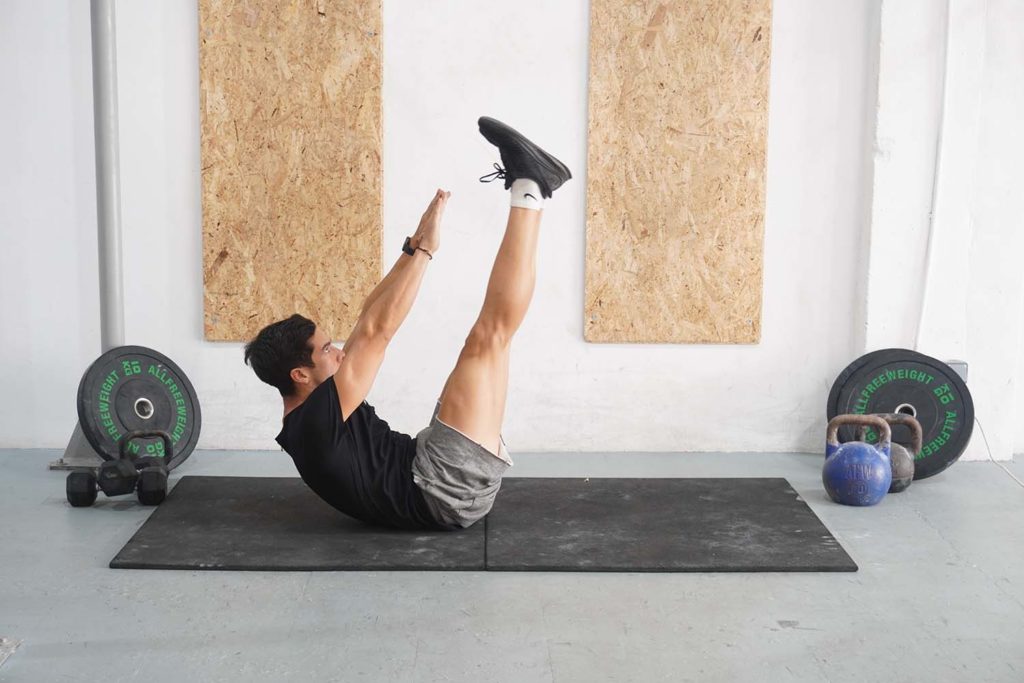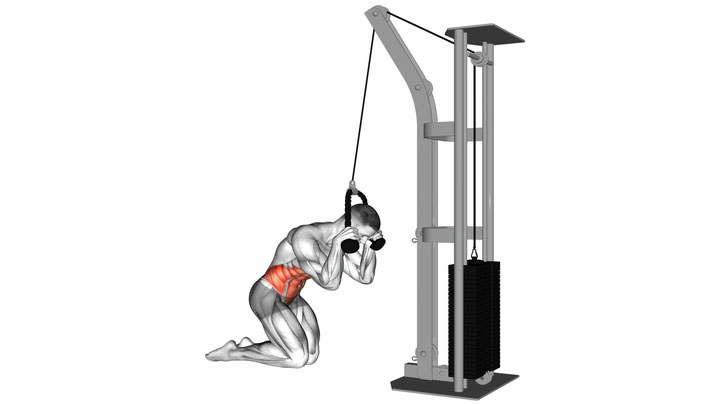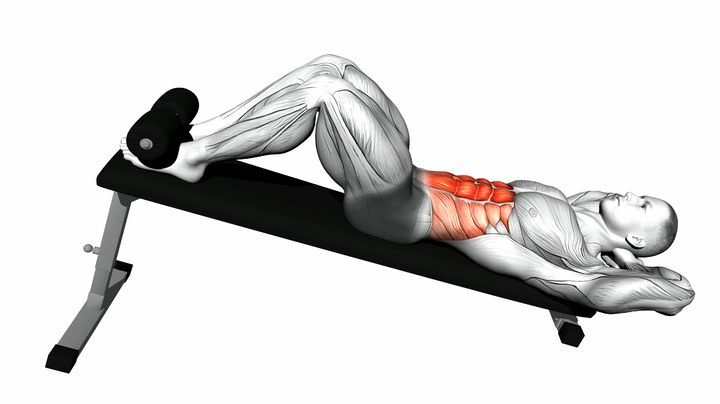Why is a sit up a beneficial exercise?
We can do countless exercises to build our abs: the V up, plank, leg raise, cable crunch, and more. While each offers its unique benefits, it never hurts to go back to the basics because there is always more to learn and do.
The sit up is one of these fundamental exercises we’ve all learned about and done in gym class. But thanks to the allure of fancier movements, sit ups have faded into obscurity.
The good news is that a more complicated approach isn’t always better for us, and this applies to the sit up. Despite the basic exterior, sit ups are profoundly beneficial for trainees of all levels. Aside from training the abs, sit ups are great for teaching you how to brace your midsection, which is beneficial for your sports performance and everyday life.
The best part is that sit ups require no equipment, which makes them the perfect ab-strengthening activity to do at home.
How to do a Sit Up
- Lie on the floor with your legs bent, feet flat on the floor, and knees pointing to the ceiling.
- Bring your arms to your sides and place your fingertips behind your head, just above your neck.
- Engage your abs and take a breath. Lift your shoulder blades a couple of inches off the floor.
- Raise your torso toward your thighs by engaging your abs.
- Once your torso is close to your thighs, hold the position for a moment.
- Lower your torso back to the floor, exhaling on the way down. Keep your shoulders off the floor for the duration of the set.
- Take another breath and repeat.
What muscles does a sit up activate?
The primary muscle that works during a sit up is the rectus abdominis (the six-pack). Our rectus abdominis originates from the pubic bone and inserts into the sternum. The muscle’s primary function is to crunch the torso by bringing the ribcage closer to the pelvis (1). Rectus abdominis also plays a vital role in torso stability.
Our transverse abdominis also engages during a sit up. The deep abdominal muscle plays a massive role in torso stability, allowing us to stay in position while doing sit ups (2).
Some hip flexor and oblique activation is also inevitable with the sit up, though these muscles are not the primary target of the movement. Hip flexors support our torso movement, and our obliques contribute to upper body stability.
What is the difference between sit ups and crunches?
Many people see the sit up and crunch as the same exercise. While there are similarities, the two movements are also different in specific ways.
The apparent difference between sit ups and crunches is the range of motion. As discussed above, sit ups have you raise your torso to your thighs.
Doing so allows you to train your midsection, hip flexors, and even your back to some degree. In contrast, a crunch only has you raise your shoulders a few inches off the floor. As such, the movement mainly focuses on the rectus abdominis.
The sit up is a fantastic movement for those looking to train multiple muscle groups simultaneously. Sit ups are also beneficial because you can do more variations of the exercise and keep your training engaging.
Crunches are better suited for beginners, especially those suffering from back issues. The limited range of motion allows you to work and develop your abs, but it doesn’t lead to excessive torso movement that might aggravate an injury.
Variations and Modifications of the Sit Up
1. Weighted Sit Up
The weighted sit up is the simplest way to make the exercise more challenging. All you have to do is grab a medicine ball, dumbbell, or weight plate and hold it in front of your chest as you do sit ups. The additional resistance will make the sit up more difficult, allowing you to strengthen your midsection.
2. Twisting Sit Up
The twisting sit up is a variation where you introduce a degree of torso rotation to the traditional exercise. Instead of moving your torso up and down, you have to twist your torso at the waist. In doing so, you force your obliques to engage more.
3. Butterfly Sit Up
The butterfly sit up is a simple variation that introduces an element of instability and lengthens the range of motion a bit. Instead of having your feet on the floor, you position them against one another with your knees flared. In doing so, you can’t balance yourself with your feet, forcing your midsection to work harder on every repetition.
Mistakes to Avoid
A common mistake with sit ups is going through the motions. Many trainees focus only on moving from point A to B without activating the right muscles. An effective sit up forces your midsection muscles to work hard, so brace your core and try to engage your abs on each repetition.
Another common sit up mistake is pulling your head forward. As discussed above, the traditional way to do sit ups is to have your fingertips at the back of your head. But in their effort to do extra repetitions, some people end up pulling their head forward, which does nothing but strain their neck. If you struggle to quit the bad habit, you can place your hands on top of your chest.
The third significant mistake with the sit up is relaxing between repetitions. For example, you do a sit up, lower your torso to the floor and lie back. Doing so is not ideal because you lose the tension, allow your muscles to relax, and make the exercise easier. Avoid the mistake by keeping your torso slightly crunched and shoulder blades off the floor for the duration of each set.
Similar Exercises to the Sit Up
V Up

The V up is an effective ab exercise where you raise your torso and legs simultaneously. Like the regular sit up, you move your torso through the same range of motion with the V up. The only difference is, you also have to raise your lower body, making the exercise much more challenging to do.
Cable Crunch

The cable crunch is another effective abdominal exercise. Your goal with this movement is to grab a rope attachment, get down on your knees, and begin to crunch your torso against the external resistance. Cable crunches are effective because they attack your abs and allow you to overload the muscle with as much weight as you can handle.
Decline Crunch

Decline crunches are another effective bodyweight movement you can do to strengthen your midsection. The premise behind the exercise is simple. Find a decline bench, sit on it, anchor your feet, and lie back. Once in position, begin crunching your torso. The decline position will make the movement more challenging, forcing your core muscles to engage better.

